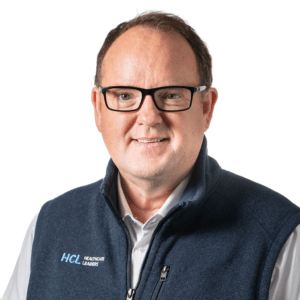Senior Living Residents Put Extra Pandemic Time to Good Use Sewing Dresses for Girls in Africa

Christina Bush, director of independent living, Ohio Living
The social distancing measures of the pandemic have meant that many senior care facility residents find themselves with extra time on their hands.
Dawn George and other residents at Ohio Living Westminster-Thurber in Columbus, Ohio, put their sewing talents to work for good, and were quickly joined by many other residents enthusiastic about helping out with their skills. Their hard work resulted in the creation of over 350 face masks, then 76 dresses for charity, and a current project to create fidget blankets and lap pillows to benefit residents of the facility’s memory care unit.
Big Ideas and a Desire to Help
Christina Bush, director of independent living at Ohio Living, notes that many of the facility’s residents are former professors and teachers. “Philanthropy is already in their nature,” Bush explains, so it made sense that when the facility ran into difficulty sourcing face masks at the beginning of the pandemic, residents wanted to help.
Residents whose hobbies included sewing and quilting gathered all of their supplies, made up a team, and made masks for not only themselves, but also for staff. “They brought their sewing machines down into our community room and built up a workshop (before social distancing measures were in place),” says Bush. They worked for a week straight and produced 350 masks during that time.
George, who has been at the facility for about a year, knew she had an engaged community of sewers. She had been reading about the nonprofit, Little Dresses for Africa, which sends donated dresses with mission groups to give to girls in Africa. Deciding to sew dresses to donate to the nonprofit, George put a message in the resident newsletter, inviting others to join in on the project. She also left dress patterns with the receptionist for other residents to use.
Soon after, the receptionist told George that all of the patterns had been claimed. More patterns were supplied.
News of and enthusiasm for the project quickly spread. About twelve residents worked to create the 75 dresses. “Our receptionist, who is also a sewer, decided to make sanitary pads. She got her church involved and they made over 300 of them,” says Bush. The sanitary pads will also be donated to Little Dresses for Africa.
The collaborative nature of the project was reflected when the finished dresses were displayed. Bush notes that as you walked down the line of dresses, you could see the nuances and special touches that each sewer added to their dresses. “Someone loved buttons – there were buttons on certain dresses. Another embroidered their dresses. One sewer made angled pockets. Everyone used the same dress pattern, but the dresses looked so different and unique because everyone put their own touches on them,” says Bush.
The Next Project
With the dresses completed, Bush explains that residents quickly approached her, asking her to find another sewing project they could work on next. Bush recalled reading an article about senior care and fidget blankets.
These blankets feature different textures and elements like long strings, buttons, and zippers, and they give people with late-term Alzheimer’s and dementia something to occupy their hands. “These residents often fidget with their hands, and that becomes agitation because they don’t know what to do with this pent-up energy,” explains Bush. “The fidget blankets can be very calming, and they give the hands something to do.”
Bush approached Ohio Living Westminster-Thurber’s executive director, Leslie Belfance, with the idea of the residents making fidget blankets and fidget pillows for the facility’s memory care unit. Belfance said that the facility could use as many blankets and pillows as the residents could make, and their next project began.
George and another sewer, Evy Hummon, are running this project, and there is tremendous support among the residents. George and Hummon already had a list of people who couldn’t help with the dress project but wanted to help with the next. In addition to having plenty of sewers who will help create the blankets and pillows, other residents and staff have already donated materials like buttons and zippers to be used for the project.
“In just five days, we could probably make 30 blankets with the materials that have been donated,” says Bush. “When word gets out and these projects are announced, people come out of the woodwork to help.”
Supporting Resident Projects and Ideas
In the Ohio Living Westminster-Thurber environment, residents are encouraged to develop their own projects and share their ideas, and Bush helps to support that. “As a director, I feel like they know what projects are going to fulfill them. My job is to help facilitate that,” she says.
Bush asks residents how she can best help them, whether that’s putting a note in her weekly email, putting up flyers, or helping to gather people together. “We have a big open-door policy – no idea’s stupid. I’ll try anything once, and if it doesn’t work, it’s okay, we’ll find another project.”
Bush notes that this support is particularly important during the pandemic. “I know with the stress of being in the pandemic, sometimes you feel short on time. But I also try to stay very conscious of the fact that residents are bored and they’d like something to do. I remember that I can take five minutes, give a resident my undivided attention, and connect them with people who can help them.”
By empowering residents, Bush encourages them to share new and creative ideas. It’s ideas like that which led to the dress project, and which will, undoubtedly, lead to other exciting future projects, too.

Paige Cerulli is a contributing writer to i Advance Senior Care.
Related Articles
Topics: Activities , Featured Articles











